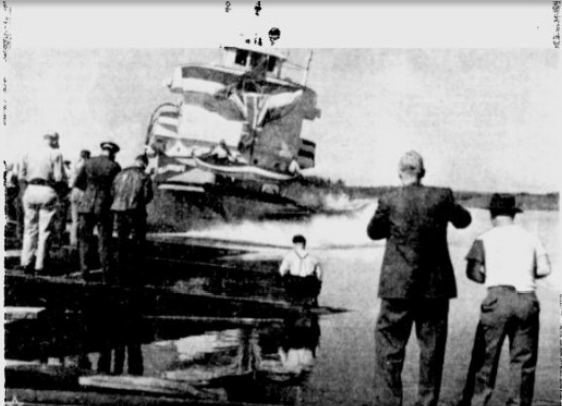 | ||
The Radium Yellowknife is a Canadian tugboat. Like other vessels built for service on the MacKenzie River, its tributaries, and Great Bear Lake and Great Slave Lake, she was first built in a shipyard in southern Canada, then disassembled and shipped by rail to riverport on Lake Athabasca, where it empties into the Slave River. She was built in Vancouver, British Columbia. Her reassembly was delayed as several of the railway cars carrying her components derailed. She was launched on August 18, 1948 -- late in the season, as the rivers used to freeze in late September, early October. After her reassembly, she sailed to the portage on the Slave River at Fort Smith, Northwest Territories, dragged overland across the portage to the lower river, where she could then access the Great Slave Lake and the MacKenzie River, and the Beaufort Sea.
When she was launched she was the fifteenth and largest vessel operated by the Northern Transportation Line -- also known as the "Radium Line" as many of the vessels contained the prefix "radium" in their name. One of the fleets most important ports of call was Port Radium, on Great Bear Lake, the source of much of the uranium used by the Manhattan Project during World War II.
The spring thaw comes late on the Mackenzie River and her tributaries. In 1950 she arrived at Hay River on June 15. In 1953 the Radium Yellowknife was still frozen in at Norman Wells on Great Slave Lake as late as June 8.
In 2003 she transited the Northwest Passage, overwintering in Iqaluit, Nunavut, when the ice came early. Since then she has served on the Great Lakes.
